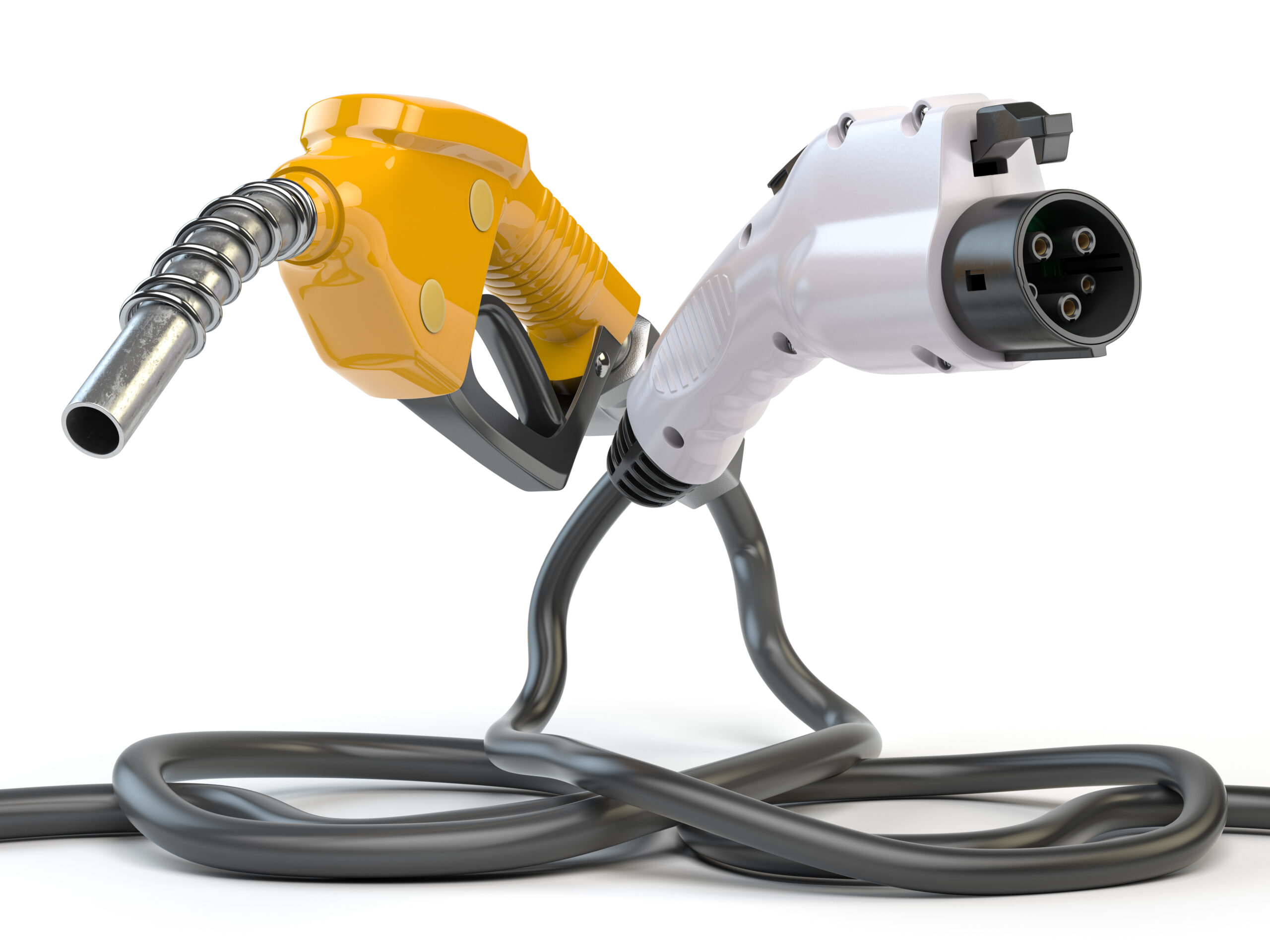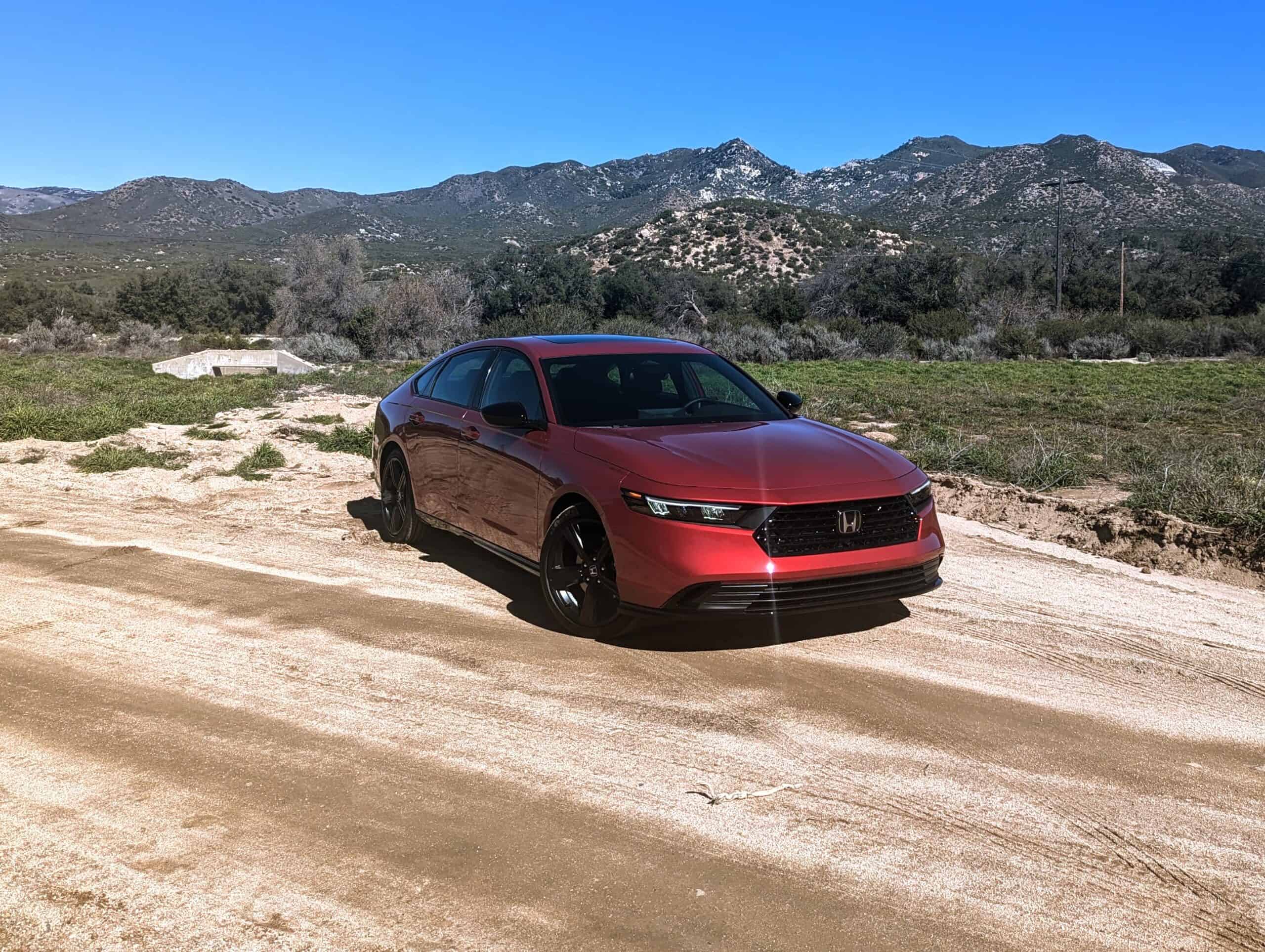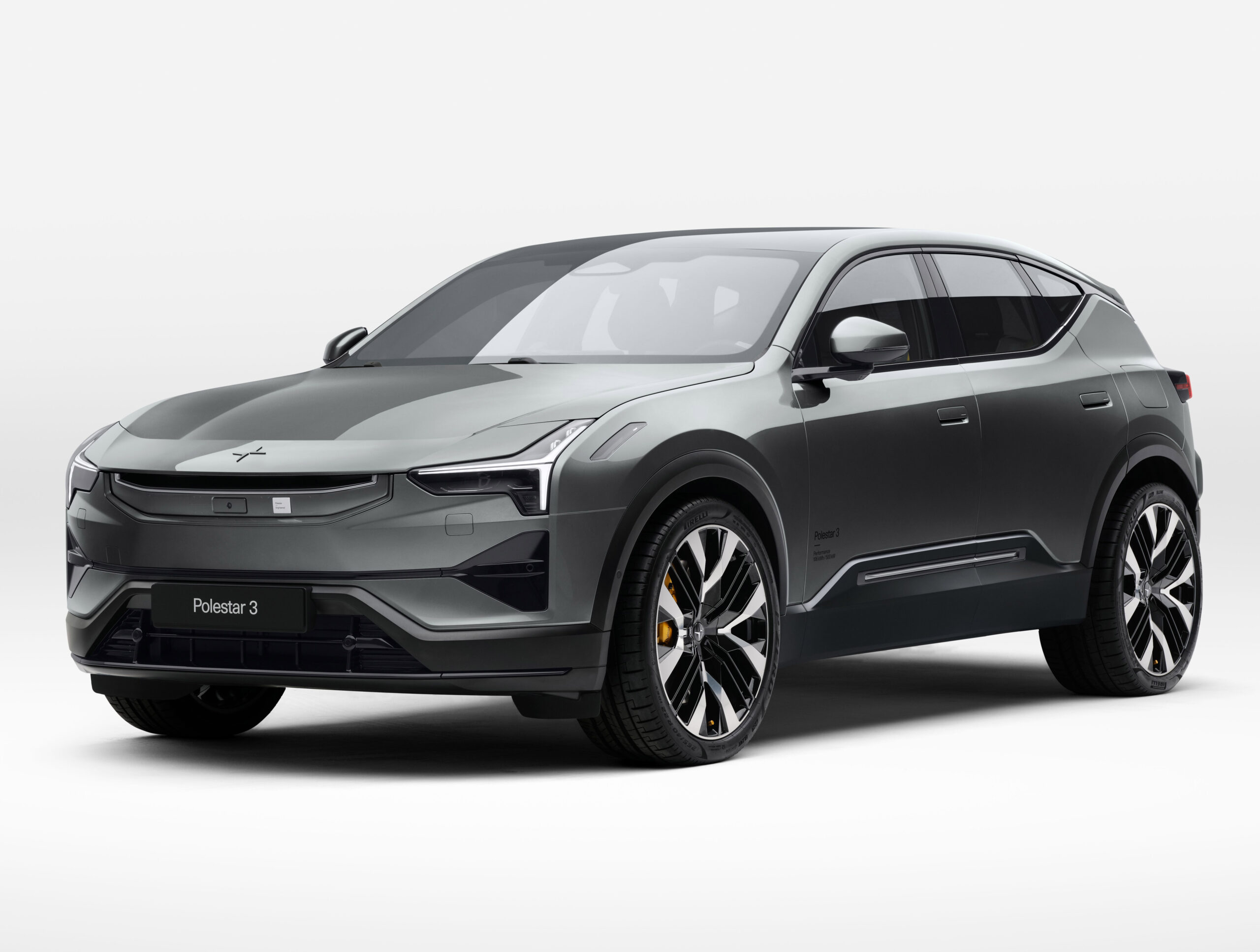

The eleventh-generation Accord is here, and this redesign takes more of an evolutionary approach this time. Where the last generation was a drastic change from the existing formula, the new model appears to be more of a modern interpretation of the existing car. The top engine this time around is no longer the 2.0L turbo 4-cylinder, but a 204-horsepower hybrid. Inside is the most advanced cabin Honda has ever developed, with a new Google-integrated infotainment system on the Touring trim. Let’s take a first look.
Outside, the Accord has grown by a decent margin, and that is noticeable as soon as you lay eyes on the front and rear overhangs. This is now the longest sedan in the segment at 195.7 inches long, which also helps make the 16.7-cubic-feet trunk one of the largest out there. The styling is a bit more simple and angular than before, with a distinct lack of chrome up front. In fact, no Accord has chrome trim aside from what you’ll find around the side windows. All of the exterior lights are LEDs (the rear light bar is broken up into multiple horizontal elements that give it a distinct flair), and a standard-size moonroof is standard on all but the base trim.

Wheel sizes go as high as 19 inches, with a number of options to choose from depending on the trim. However, when climbing the trim structure, aside from the wheels, there is very minimal distinction between the levels. The top Touring trim has silver-painted accents in the corner of the front fascia as well as parking sensors, but other than that, they all kind of look the same. This is a different approach from what Toyota has done with the current Camry, something we expect them to continue for the imminent next-generation. Either way, the Accord is not as bold as it was before, but it retains the long and sleek shape that people really gravitated towards last time. A handsome look that neither offends nor bores.

One interesting thing to note is how the latest Civic emulates the look of the outgoing Accord, but it only just came out last year. Now this all-new Accord is here and it is leaving that old design behind, effectively rendering the Civic stale in the looks department. Expect the next Civic in five or six years to look like a baby 2023 Accord.
Inside is another evolutionary update, where the Accord adopts the latest design theme that began with the Civic. A strong horizontal visual anchor comes in the form of the grated section that spans the width of the space in front of the passenger. The (standard!) digital instrument cluster is the same size as the Civic’s, so it looks a tad small here. The main screen, though, is huge for a Honda. Most Accords will get the 12.3″ unit, but only the top Touring trim will get that screen with the latest Android Automotive system. This is the first application in a Honda product, and it works flawlessly. There are a few things missing though, for example, a 360-degree surround view camera.

In typical Honda fashion, the front passenger’s seat does not have the same range of motion as the driver’s, and it desperately needs height adjustment. You feel like you’re sitting on the floor, but at least the seat itself if comfortable. Out back, there is more than enough leg room to satisfy limber folks. However, head room is somewhat limited for taller passengers. If you’re taller than 5′ 10″, you probably won’t be able to fit sitting completely straight up. The outboard positions are heated on the top trim, but not ventilated (you will find both up front, though).

All hybrid models have this ‘Hybrid’ sticker on the steering column. It’s an interesting placement since only the front passenger or rear right side passenger can see it. The more you know!
Honda decided to focus on efficiency this time around, so gone is the potent 2.0L turbo 4-cylinder. The manual transmission was killed mid-way though the current model’s life cycle, so don’t expect it to return any time soon. The base engine is the carryover 1.5L turbo 4-cylinder producing 192 horsepower and managing 32 mpg combined. The most powerful and efficient engine for this year is the hybrid from the new CR-V that combines a 2.0L 146-horsepower 4-cylinder, a 181-horsepower electric motor, and a roughly 1.5-kWh battery to make what Honda claims is 204 total system horsepower. Both options are CVT and front-wheel drive only. The most efficient trim with this system will get around 48 mpg combined, which is an improvement over the current generation, but just no quite as good as the Camry or Sonata hybrids.
This hybrid system has dual personalities. It can either act as a serial hybrid, or a parallel hybrid. On the highway, it will be in parallel mode for maximum efficiency, but serial mode when you’re pushing it on city roads. In that case, there is actually no mechanical connection between the engine and the road. You’re really getting propulsion from the electric motor, except without the aid of all-wheel drive like the CR-V. This CVT will imitate shifts to make the drivetrain feel more natural. It has a particular sort of automatic feel that’s a departure from Honda’s first generation hybrid system. This is probably why acceleration times are a little bit slower in preliminary testing compared to the old Accord Hybrid. We only got 7.2 seconds, which could have been a little quicker if the CVT actually did the droning thing.
This Accord is definitely quieter than the previous generation, but the ride quality is a little bit stiffer than before. Honda didn’t overtly say that they were targeting the sportiest driving dynamics in the segment, but this is likely going to have some of the best. The suspension feels firm but not too harsh and is very planted in the corners. We imagine this will brake from 60 mph to 0 in about 120 feet or so thanks to the 235-mm tires and the fact that Honda has done a good job keeping curb weight in check. A nice surprise is the fact that it has paddles that can increase regen to a relatively strong level. It defaults to a mode where the level you select reverts back to normal after every brake actuation, but you can select a manual mode that will hold your selection for the entire drive, too.
We didn’t achieve Honda’s lofty fuel economy goals during our first drive, as we have been averaging just over 40 mpg. That still makes this considerably more efficient than pretty much everything in this segment outside of the competitive hybrid models. As earlier mentioned, the Camry and Sonata hybrids are more efficient and will creep into the 50s in the city if you treat them correctly. This generation of the hybrid system also certainly feels more engaging out of your favorite road. Even though we’re not the biggest fan of the imitation shifts, most folks will find this a bit more normative.

The Accord Hybrid also excels when it comes to drivetrain refinement because this does not have a stepped automatic transmission like we find in Hyundai’s hybrids. Acceleration is very linear and deceleration doesn’t have the typical automatic transmission downshifts. This blended braking system has a novel answer to what happens when the battery gets completely full in something like a Hyundai hybrid system which only has the single electric motor between the engine and the wheels. The Sonata, Camry and Prius have to downshift the transmission and use traditional engine braking to slow the vehicle down, but this doesn’t. This has the ability to just use the electric motor that’s attached to the engine to spin the engine around and essentially consume that excess energy byproduct. That’s what gives it the very consistent regenerative braking feel. Honda has actually been doing this in its hybrids for quite some time.
When the battery is completely empty, all you have left is the 2.0L engine to get you around. It’s not going to be quite as peppy as when the electric motor is helping things out. You will notice that when you’re climbing really steep mountain grades. Honda has not said anything about a plug-in hybrid version of the Accord returning, but we hope that it does because this drivetrain design lends itself really well to the addition of a bigger battery pack and a plug.
So, with sedans not being as popular as they once were, Honda played it somewhat safe with this redesign of a winning formula. In other ways, though, you could say Honda is actually taking a big risk by making a 204-horsepower hybrid the top motor when the old 2.0L turbo 4 was so revered. Time will tell, but those looking for a modern take on the last generation will be very pleased with the package Honda has put together here. The 2023 Accord is on sale now, starting a little higher than before at $27,295 before destination. If you want the hybrid, that’ll be $31,895 before destination, with the most expensive model, the Touring Hybrid, coming in fully-loaded at $39,440.



